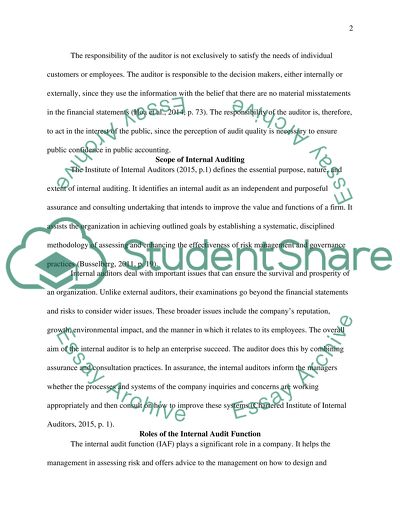Cite this document
(“The Effect of Internal Audit Reports to Stakeholders on Audit Quality Essay”, n.d.)
The Effect of Internal Audit Reports to Stakeholders on Audit Quality Essay. Retrieved from https://studentshare.org/finance-accounting/1679187-the-effect-of-internal-audit-reports-to-stakeholders-on-audit-quality-and-earnings-performance-an-empirical-study-of-the-companies-listed-on-the-london-stock-exchange-lce
The Effect of Internal Audit Reports to Stakeholders on Audit Quality Essay. Retrieved from https://studentshare.org/finance-accounting/1679187-the-effect-of-internal-audit-reports-to-stakeholders-on-audit-quality-and-earnings-performance-an-empirical-study-of-the-companies-listed-on-the-london-stock-exchange-lce
(The Effect of Internal Audit Reports to Stakeholders on Audit Quality Essay)
The Effect of Internal Audit Reports to Stakeholders on Audit Quality Essay. https://studentshare.org/finance-accounting/1679187-the-effect-of-internal-audit-reports-to-stakeholders-on-audit-quality-and-earnings-performance-an-empirical-study-of-the-companies-listed-on-the-london-stock-exchange-lce.
The Effect of Internal Audit Reports to Stakeholders on Audit Quality Essay. https://studentshare.org/finance-accounting/1679187-the-effect-of-internal-audit-reports-to-stakeholders-on-audit-quality-and-earnings-performance-an-empirical-study-of-the-companies-listed-on-the-london-stock-exchange-lce.
“The Effect of Internal Audit Reports to Stakeholders on Audit Quality Essay”, n.d. https://studentshare.org/finance-accounting/1679187-the-effect-of-internal-audit-reports-to-stakeholders-on-audit-quality-and-earnings-performance-an-empirical-study-of-the-companies-listed-on-the-london-stock-exchange-lce.


